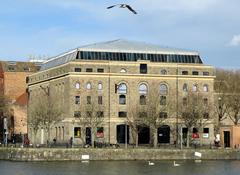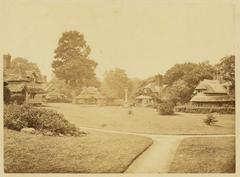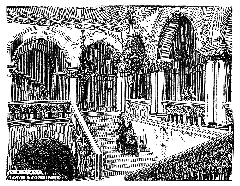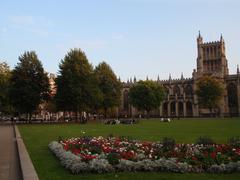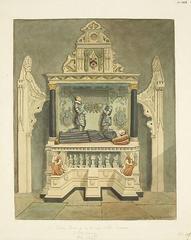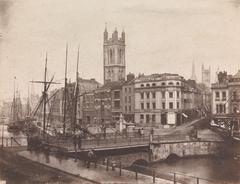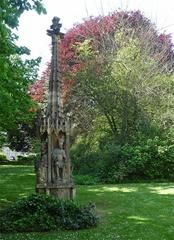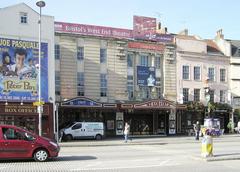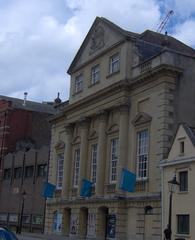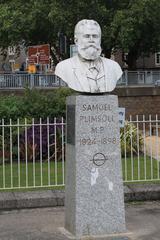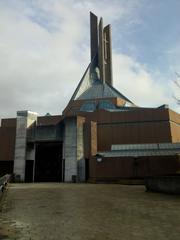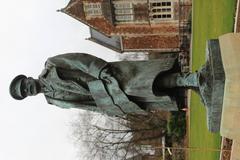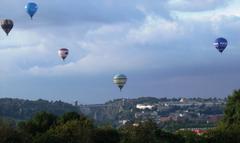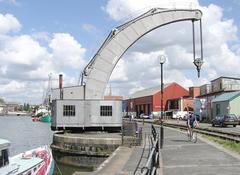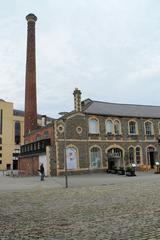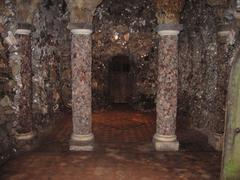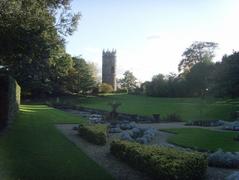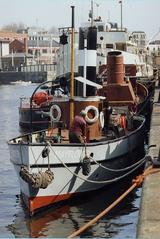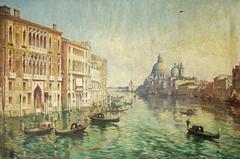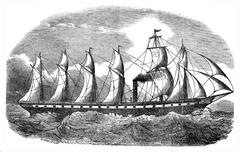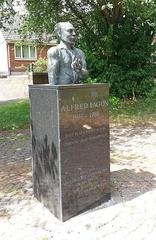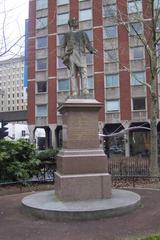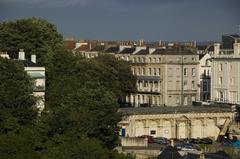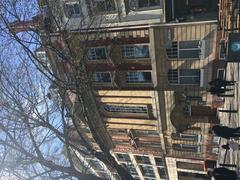
Temple Church Bristol: Visiting Hours, Tickets, and Historical Guide
Date: 04/07/2025
Introduction
Temple Church, nestled in Bristol’s city centre, stands as a remarkable testimony to centuries of religious, architectural, and community heritage. Founded in the 12th century by the Knights Templar, the church’s unique architectural features, including its rare round nave and the iconic leaning tower, reflect both spiritual symbolism and the challenges of medieval construction. Surviving the tumult of the Reformation and the devastation of the Bristol Blitz, Temple Church today is a tranquil ruin embraced by gardens, offering visitors a poignant experience of history and resilience. With its central location, free admission, and accessible grounds, Temple Church is an essential destination for anyone exploring Bristol’s rich tapestry of historical sites (English Heritage; Secret Bristol; Bristol Post).
Table of Contents
- Historical Overview
- Visiting Information
- Frequently Asked Questions (FAQ)
- Plan Your Visit
- References
Historical Overview
Foundation and Templar Origins
Temple Church’s story begins in the early 1100s, when the Knights Templar established a preceptory on land granted by Robert of Gloucester. The original church featured a distinctive round nave, mirroring the Church of the Holy Sepulchre in Jerusalem—a signature of Templar architecture, symbolizing both spiritual aspiration and martial prowess (English Heritage; Worldwide Writer). The round design invoked the perfection of heaven and the eternal, while its location near the River Avon positioned it as a focal point for trade and community in Bristol’s expanding southern districts.
Hospitaller Stewardship and Medieval Growth
After the suppression of the Templars in the early 14th century, Temple Church passed to the Knights Hospitaller. Under their care, the church was expanded and transformed, with the round nave replaced by a larger rectangular Gothic structure to accommodate a growing population and changing liturgical practices. Chapels were added, notably St Katherine’s Chapel, a gift to Bristol’s weavers’ guild, reflecting the church’s integration with the city’s thriving textile industry (English Heritage).
Architectural Evolution: The Leaning Tower
Construction of the church’s west tower began in the 14th century but was plagued by unstable, waterlogged ground. The lower stages began to tilt outward, halting work for decades. Eventually, builders completed the upper portion vertically above the lean, resulting in a dramatic tilt of over five feet—just one degree less than Pisa’s famous tower (Secret Bristol; The Crazy Tourist). This “Leaning Tower of Bristol” remains one of the city’s most striking landmarks and a symbol of resilience and ingenuity.
Reformation, Parish Life, and Wartime Destruction
Following the Dissolution of the Monasteries, Temple Church became a parish church, its richly decorated Catholic interiors gradually simplified in line with Protestant reforms. The church was a vibrant community hub until World War II, when the Bristol Blitz of 1940 gutted the building, leaving only its shell and leaning tower intact (English Heritage; Bristol Post). Post-war, the ruins were preserved and stabilized, and the surrounding churchyard was converted into peaceful public gardens.
Surviving Features and Legacy
Despite the devastation, Temple Church retains significant medieval masonry, including the chancel arch, column bases, and the outline of the original round nave, now marked in the gardens. Artefacts such as a 15th-century brass chandelier were relocated to Bristol Cathedral, while other items found new homes in local churches (English Heritage). Today, the church stands as a testament to Bristol’s layered history—from medieval commerce to wartime endurance—and remains an active site for community events and cultural festivals (Secret Bristol).
Visiting Information
Visiting Hours
- Grounds and Gardens: Open daily from 10:00 am to 4:00 pm, April through January. Exterior viewing is possible during daylight hours (See Around Britain).
- Church Interior: Generally open to visitors during the same hours, though access may be restricted during events or adverse weather (English Heritage Opening Times).
- Special Closures: Check in advance for event-related closures, especially between 14 June and 2 August.
Tickets and Admission
- General Admission: Free entry for all visitors.
- Special Events: Some events (e.g., Bristol Light Festival installations) may require tickets or have separate access (Bristol Post). Always verify via the English Heritage events page.
Accessibility
- Wheelchair Access: The garden path encircling the church is wheelchair friendly (See Around Britain).
- Assistance Dogs: Welcome on leads throughout the grounds.
- Toilets: No toilets on site; accessible facilities are available nearby (Great British Toilet Map).
- Mobility Equipment: Bristol Shopmobility offers wheelchair and scooter hire (Visit Bristol).
- For detailed accessibility info, see Accessible Bristol.
Directions and Parking
- Address: Kings Head, 60 Victoria Street, Redcliffe, Bristol, BS1 6DE (English Heritage).
- By Train: Bristol Temple Meads station is a 5–10 minute walk (See Around Britain).
- By Bus: Frequent city routes serve Victoria Street and Temple Meads (Traveline).
- By Car: Charged on-street parking is within a 5-minute walk (Bristol parking guide).
- Clean Air Zone: Bristol operates a Clean Air Zone (CAZ); check your vehicle’s status before driving (Bristol CAZ Info).
Facilities and Amenities
- Gardens: The churchyard is a public garden, ideal for quiet walks and reflection (English Heritage).
- Seating: Benches are available.
- Nearby Amenities: Cafés, shops, and the University of Law are within walking distance (See Around Britain).
- Medical Facilities: Central Health Clinic and University Hospital Bristol are both nearby.
Guided Tours and Events
- Guided Tours: Offered on select days (usually Fridays). Advance booking is recommended via Eventbrite.
- Special Events: The church regularly features art installations (e.g., during the Bristol Light Festival) and community activities (Bristol Post; English Heritage events).
Safety and Visitor Guidelines
- Weather Closures: The site may close in adverse weather—check before visiting.
- Supervision: Children should be supervised on uneven ground.
- Photography: Permitted for personal use; for commercial photography, contact English Heritage.
- Respect: Please be mindful of the church’s historic and spiritual significance.
Frequently Asked Questions (FAQ)
Q: What are the Temple Church visiting hours?
A: The gardens and church are open daily from 10:00 am to 4:00 pm, April–January. Check for special closures during events or poor weather.
Q: Is there an admission fee?
A: No; general admission is free.
Q: Is Temple Church wheelchair accessible?
A: Yes, the garden paths are accessible. Some uneven ground may remain in the ruins.
Q: Are dogs allowed?
A: Dogs on leads and assistance dogs are welcome.
Q: Can I book a guided tour?
A: Yes, guided tours are available on select days and must be booked in advance (Eventbrite).
Q: What about toilets and other facilities?
A: There are no toilets on site, but accessible public toilets and cafés are nearby.
Q: What’s the best time to visit?
A: Early mornings and late afternoons are quieter, and offer ideal lighting for photography.
Plan Your Visit
Address: Kings Head, 60 Victoria Street, Redcliffe, Bristol, BS1 6DE
Opening Hours: 10:00 am – 4:00 pm daily (April–January)
Admission: Free
Contact: 0370 333 1181; English Heritage Temple Church
Accessibility: Wheelchair-accessible paths; assistance dogs welcome
Nearest Station: Bristol Temple Meads (0.25 miles)
Parking: Charged on-street parking nearby
Medical Facilities: Central Health Clinic and University Hospital Bristol (within 300 metres)
Download the Audiala mobile app for real-time updates, guided tours, and exclusive content on Temple Church and other Bristol historical sites.
Visuals and Interactive Elements

Alt text: The iconic leaning tower of Temple Church Bristol against a clear sky.- Interactive Map and Virtual Tour
- Additional images with descriptive alt tags are available on the English Heritage website.
Summary Table: Key Information
| Feature | Details |
|---|---|
| Address | Kings Head, 60 Victoria Street, Redcliffe, Bristol BS1 6DE |
| Opening Hours | 10:00 am – 4:00 pm daily (April–January); event restrictions may apply |
| Admission | Free (special events may differ) |
| Accessibility | Wheelchair-accessible paths; assistance dogs welcome |
| Nearest Station | Bristol Temple Meads (0.25 miles) |
| Parking | Charged on-street parking within 5 minutes’ walk |
| Facilities | Public gardens, benches, nearby cafés/restaurants |
| Contact | 0370 333 1181; English Heritage Temple Church |
| Medical Facilities | Central Health Clinic, University Hospital Bristol (within 300 metres) |
Final Tips
- Combine your visit with other Bristol heritage sites such as St. Mary Redcliffe Church and Queen Square.
- For accessibility planning, consult AccessAble or Euan’s Guide.
- Use public transport or walk to reduce your environmental impact and avoid Clean Air Zone charges.
- Stay informed about events and closures by checking the English Heritage website.
References and Further Reading
- Temple Church Bristol: Visiting Hours, Tickets, and Historical Insights, English Heritage
- Temple Church Bristol Visiting Hours, Tickets & Architectural History, Secret Bristol
- Temple Church Bristol: Visiting Hours, Tickets, and Historical Significance, Bristol Post
- Temple Church Visiting Hours, Tickets & Guide to Bristol Historical Sites, See Around Britain
- Eventbrite: Bristol Temple Church Guided Tours
- Bristol Parking Guide
- Bristol Clean Air Zone Information
- AccessAble
- Euan’s Guide
Explore more about Bristol’s historical sites on our website and enhance your heritage experience with the Audiala app.



